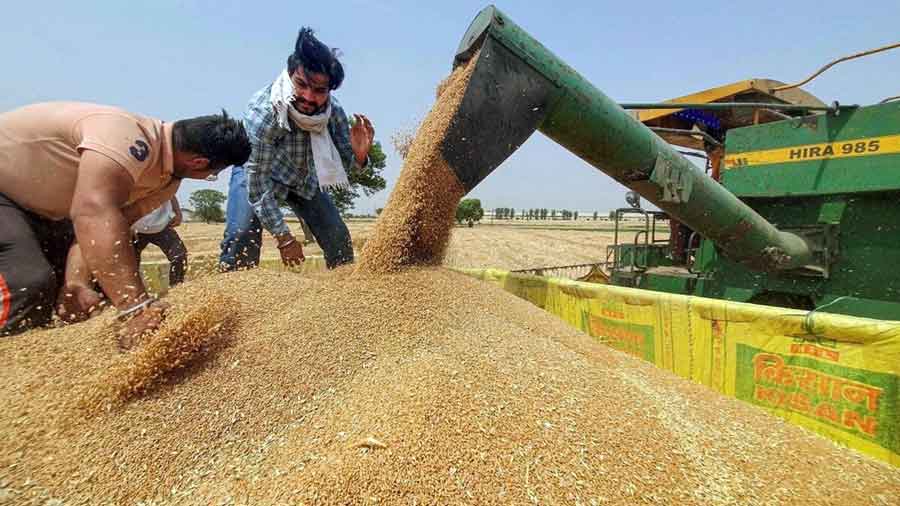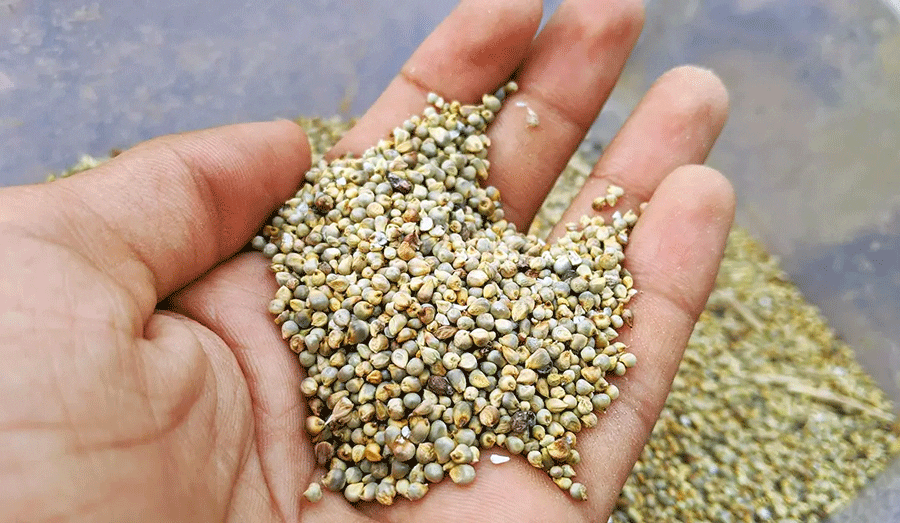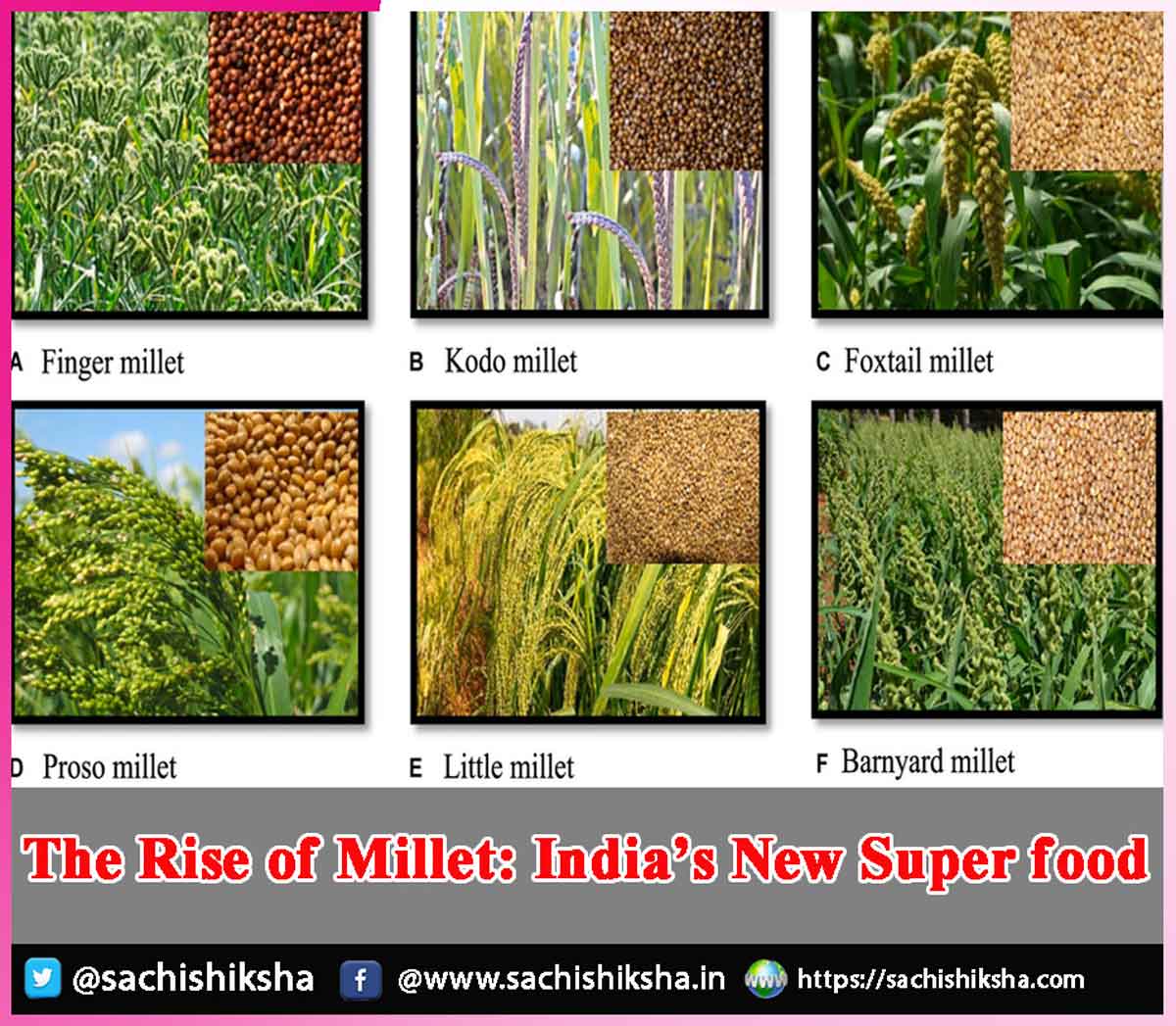The Rise of Millet: India’s New Super food
Introduction: In recent years, there has been a notable resurgence of interest in millets, once considered a humble and traditional staple of rural India. With increasing concerns over health, sustainability, and food security, millets are now being recognized as a “super food” – a term often used to describe nutrient-dense foods that offer a range of health benefits. India, with its deep-rooted agricultural history and rich cultural diversity, is witnessing a growing movement towards millet consumption. The growing awareness of their nutritional value, environmental sustainability, and versatility in cooking has led to millets becoming a central part of the modern diet.
Table of Contents
The History and Importance of Millets in India

Historically, millets were a crucial part of the Indian diet, especially in the dry, drought-prone regions of the country, where rice and wheat were not as viable. Varieties like finger millet (ragi), pearl millet (Bajra), and sorghum (Jowar) were staples for rural communities. However, over time, the popularity of rice and wheat, along with the Green Revolution’s emphasis on high-yield crops, led to the decline of millet cultivation. In the mid-20th century, millets were largely replaced by these more commercially viable crops, and their consumption fell out of favor in urban areas.
However, this trend is slowly reversing. Today, as urban populations become more health-conscious and there is growing awareness of the environmental impact of industrial agriculture, millets are once again being rediscovered as an essential part of the Indian food system.
Nutritional Powerhouses: Why Millets are Called Super foods

a) High in Protein and Fiber:
Millets are an excellent source of plant-based protein. For vegetarians and vegans, millets provide an important alternative to animal-based protein. Furthermore, millets are high in dietary fiber, which promotes healthy digestion and helps manage cholesterol levels. The high fiber content also stabilizes blood sugar levels, making millets a good food choice for individuals with diabetes.
b) Rich in Micronutrients:
Millets are a storehouse of vital minerals. For instance, finger millet (ragi) is especially rich in calcium, which is essential for bone health. Additionally, millets contain a good amount of iron, which helps combat anemia, and potassium, which is vital for regulating blood pressure.
c) Gluten-Free:
Another compelling reason for the resurgence of millets is their gluten-free nature. With the rise of gluten sensitivity and celiac disease, many individuals are now seeking gluten-free alternatives to wheat and other grains. Millets, being naturally gluten-free, are an excellent choice for people following gluten-free diets.
d) Low-Glycemic Index:
Millets have a low glycaemic index, which means they release glucose into the bloodstream slowly, helping maintain stable blood sugar levels. This makes them a perfect food for people with diabetes or those looking to manage their weight. The slow release of energy also contributes to prolonged feelings of fullness, which can aid in weight management.
e) Antioxidant Properties:
Several varieties of millets are rich in antioxidants, which help neutralize free radicals and reduce the risk of chronic diseases such as cancer and heart disease.
Millets and Environmental Sustainability
In addition to their nutritional benefits, millets are also gaining popularity for their role in promoting environmental sustainability. As the world grapples with the effects of climate change, there is an increasing focus on sustainable farming practices. Millets are an ideal crop for this purpose due to the following reasons:
a) Water Efficiency:
Millets are extremely drought-tolerant and require significantly less water than rice and wheat. This makes them an ideal choice for regions facing water scarcity, particularly in India, where the water crisis is becoming a critical issue. By encouraging the cultivation of millets, farmers can reduce their reliance on water-intensive crops, conserving water resources for other essential needs.
b) Soil Health:
Millets are also beneficial for soil health. Unlike rice and wheat, which deplete the soil of important nutrients, millets have a deep root system that helps improve soil structure and fertility. This makes them a more sustainable choice for small-scale farmers, as millets help maintain long-term soil health without the need for excessive chemical inputs.
c) Climate Resilience:
Millets are well-suited to withstand extreme weather conditions, including high temperatures and low rainfall. As global temperatures rise and unpredictable weather patterns become more common, millets offer a viable alternative for farmers in regions vulnerable to climate change.
The Government’s Role in Promoting Millets
The Indian government has recognized the potential of millets and has taken steps to promote their cultivation and consumption. One of the most significant developments in this regard was the declaration of 2018 as the “National Year of Millets.” This initiative, led by the Ministry of Agriculture and Farmers’ Welfare, aimed to raise awareness about the benefits of millets and to revive their cultivation.
In 2021, the United Nations declared 2023 as the International Year of Millets (IYM) to further elevate the status of these nutritious grains on the global stage. India, being the largest producer of millets, played a pivotal role in this initiative, and the government has worked to integrate millets into the public distribution system (PDS) and promote them in the mid-day meal schemes in schools.
The government has also provided support to farmers through subsidies and incentives to grow millets. By promoting millets as a viable and sustainable alternative to water-intensive crops like rice and wheat, the government aims to boost agricultural diversity and provide farmers with more resilient options.
The Role of the Food Industry
The growing demand for millets has led to a surge in the food industry’s interest in incorporating these grains into a variety of products. Once a humble grain, millets are now being transformed into ready-to-eat snacks, breakfast cereals, energy bars, flour, and even beverages.
Food startups and established brands are tapping into the health-conscious market by offering millet-based products. For instance, millets are being used in gluten-free baking mixes, pasta, and even as an alternative to rice in traditional dishes.
Challenges in the Adoption of Millets
Despite the growing awareness and interest in millets, there are several challenges to widespread adoption:
a) Consumer Awareness:
While there is a rising awareness about the benefits of millets, many people are still unaware of the different varieties of millets or how to incorporate them into their daily meals.
The Future of Millets in India
The rise of millets as a “super food” marks a return to the sustainable agricultural practices of the past. With their nutritional value, environmental benefits, and cultural significance, millets are poised to play a crucial role in the future of Indian agriculture and food security.
The government’s efforts to promote millet cultivation, along with the food industry’s interest in developing new millet-based products, will likely drive the growth of millet consumption in both rural and urban areas. Additionally, increasing global interest in plant-based and gluten-free foods presents a unique opportunity for India to export millet-based products, enhancing the country’s position in the global food market.
Conclusion
For India, millets offer a path to a more resilient, sustainable, and nutritionally rich food system. As both a solution to the pressing environmental challenges of water scarcity and soil degradation and a key component of healthy diets, millets represent the future of food.
Millets, once considered a forgotten grain, are experiencing a renaissance in India. With their remarkable health benefits, environmental sustainability, and rich cultural heritage, they are emerging as the new “super food” in both India and across the globe.













































